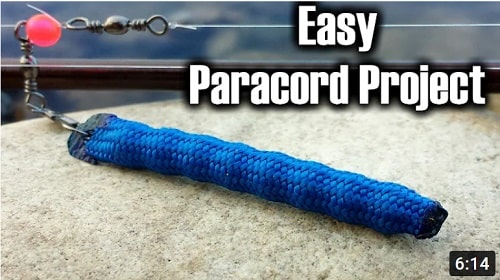Drift Fishing For Salmon: Everything You Need To Know
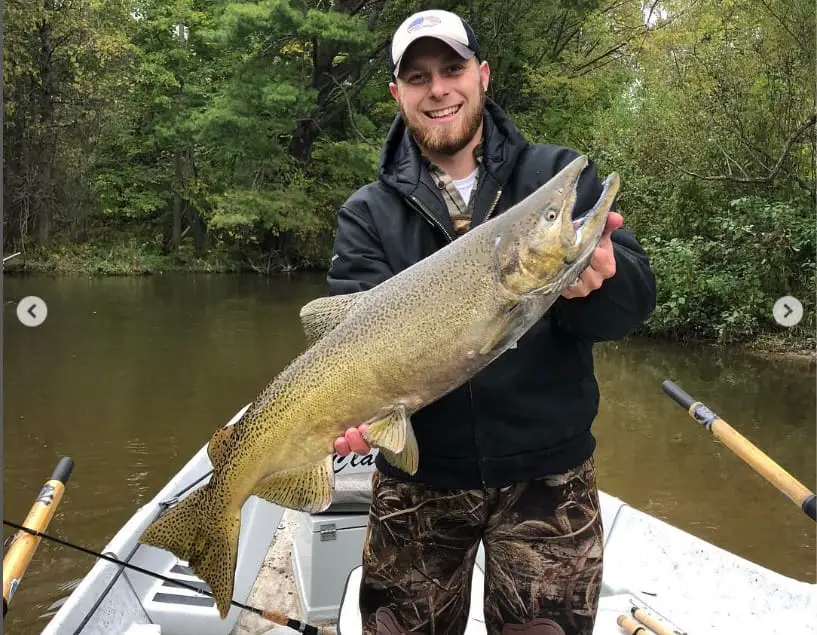
Drift fishing for salmon is a common fishing method that is used mostly in faster water and larger rivers with stronger currents or where distance fishing is required. As a guide, I have experimented with drift fishing in all types of water, and I still use it when I feel it’s the best method to get my clients or me into more salmon.
There are things that good drift fishing salmon anglers and river guides do to improve the method, and there are things you should know. In this article, I will discuss all of this and more!
This article is about the drift fishing methods, which is not the same as Side Drifting for salmon, which is drifting down the river in a boat.
What Is Drift Fishing For Salmon
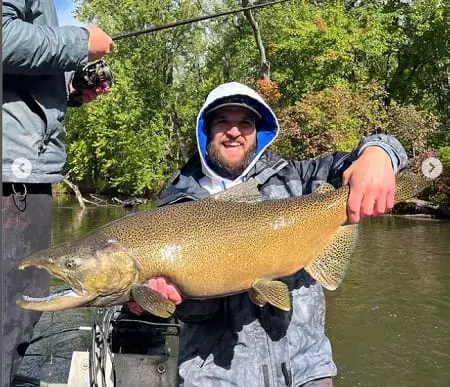
The method of drift fishing is done using a spinning rod and reel, with a leader attached to the mainline and a fixed or sliding weight that is a foot or two up from the hook and bait.
You cast your rig out into the current where you think the salmon will be, let it sink, and then drift it along the bottom with the current.
You then follow the line with your rod tip as it moves down the river. If you use too much weight, the bait won’t drift naturally or will get hung up too often.
The advantage over other methods is that it allows you to cast and fish far away from you, and it also allows you to fish very deep if you need to. You could drift fish in 4 feet of water or 30 feet of water as long as there is a strong enough current to keep your bait moving.
In some situations, drift fishing is not always the most effective method, it depends on the type of water where the salmon are holding.
What You Need To Know
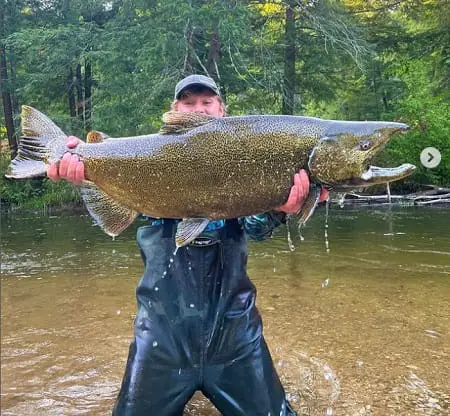
- Best drift fishing rigs for salmon
- Best rods and reels for drift fishing
- Best line for drift fishing: Includes line weights
- Best setup and leaders for drift fishing
- Best hooks for salmon drift fishing: You need salmon strength hooks
- Best salmon baits for drift fishing
- The best type of water to drift fish for salmon
- Shallow water drift fishing methods
- Deep water drift fishing methods
- Detecting bottom
- Detecting a strike
Drift Fishing Gear
To drift fish for salmon well, you also need the right gear. The right gear includes the right line, leader, as well as the right rod and reel.
Having all the right gear will improve your presentation and can help you detect the slightest bites from salmon, as well as provide the ability to determine how your presentation is going throughout the drift.
Fishing Rods
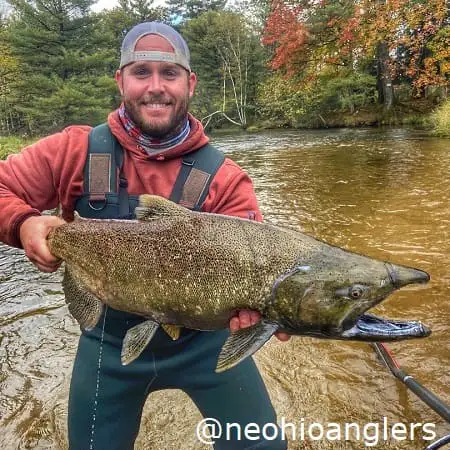
It’s also important to use the right rods. Longer and stronger rods are best for fishing for large salmon.
Most experts who excel with this method will use 9 to 11-foot river rods.
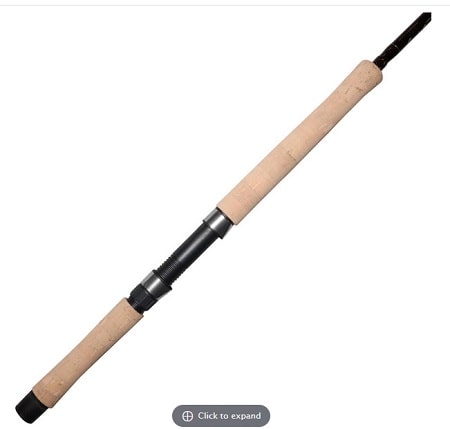
The 9 foot 6 inch or the 10’6 Lamiglas X-11 Salmon rod is one of the best salmon river rods for drift fishing and can also be used for some other salmon fishing methods.
The other great thing about this rod is that it will only cost you about or less than $120.00.
Another good rod for this method is the 10’6 Heavy or medium-heavy Fenwick HMX Salmon & Steelhead Spinning Rod. I have used this rod a lot for salmon fishing and also recommend it on my page 11 Best Salmon Rods For River Fishing.
Remember, when getting a rod to drift fish for salmon, you want a fishing rod that is strong enough to hold 12-pound to 14-pound line. You also want the extra length of an 8 to 11-foot rod to help with casting distance and better presentations.
And let’s not forget strike detection, which is often the hardest thing for new anglers to figure out with this method and that means you want a rod with a sensitive rod tip.
A rod of 8.5-foot or longer improves casting distance, allows you to keep the line off the water which will provide better line control and help you see how your drift is going, and the longer rod acts like a big shock absorber which allows you to fish with lighter leaders, which are often required when fishing for salmon in clear rivers.
When drift fishing you are often watching the line where it enters the water to see the slight twitches as the bait and weight bounce over the rocks. All this is done much easier with a longer rod that can hold the line higher off the water.
The line tightening indicates you are hung up or have a bite, but you can also feel this with a sensitive rod tip.
Reels To Drift Fish For Salmon
A good reel is more critical than when fishing smaller species. You will need to have a reel that casts easily, has a strong smooth drag, can hold enough line for the long salmon runs, and will allow you to let line out as the bait drifts down the river.
Baitcasting reels are commonly used for salmon drift fishing on the larger rivers and on the west coast rivers.
Spinning reels are also used for drift fishing and are likely the most popular reels on smaller to mid-sized rivers.
Bait Casting Reels For Drift Fishing
Drift fishing is often done with bait casting reels because they improve casting accuracy and line control.
The open spool on the baitcasting reel makes it easy to manage the quantity of line released from the reel and the speed at which the line comes out after throwing the bait out.
Most baitcasting reels allow you to adjust the free spool speed for better, longer, and more controlled drifts. This can increase the amount of time your bait spends in the strike zone.
See: 11 Best Bait Casting Reels For Salmon
Spinning Reels
Most like using spinning reels for drift fishing because they’re good for casting, and you can let the line out easily. When fishing for big salmon, make sure your spinning reel can hold a good amount of line between 10 and 14 pounds and has a reliable drag system.
On occasion, I will even use my centerpin reel if I need to drift fish and I don’t have my spinning reel with me.
Click the link to see my recommendations for the best salmon reels at different price points.
Line For Drift Fishing
The line should match your rod, reel, and the river you’re fishing in. The line weights listed below are for guys using Mono, fluorocarbon, or Copolymer lines.
In larger rivers, a heavier 14 to 16-pound line is best and your rod should be made for a line this heavy or you could break your rod. Your reel should also be larger enough to hold enough line.
When drift fishing in smaller rivers with clear water, I use a lighter 10 to 12-pound line. I go light because I can walk up or down the river if a big salmon makes a long run.
Guide Tip: Thinner lines sink faster, so your bait gets to the right spot quicker, and the thinner line doesn’t get pushed by the surface current as much giving you better line control and a more natural speed of your bait, which always catches more fish.
The exception to the line recommendation above is when using braided lines which I discuss below.
Thinner fishing lines also enable you to pack more line onto your reel.
When using braided lines, I’ll still go with around the same strength or slightly higher between 15 and 30 pounds.
My favorite braided line for salmon drift fishing is 20-pound Sufix 832 Advanced Superline, which is equivalent in diameter to 6-pound mono.
I also like using brightly colored lines, as they’re easier to see from a distance. This helps with detecting the bottom and noticing when a fish bites. Always use a leader with bright or clear lines.
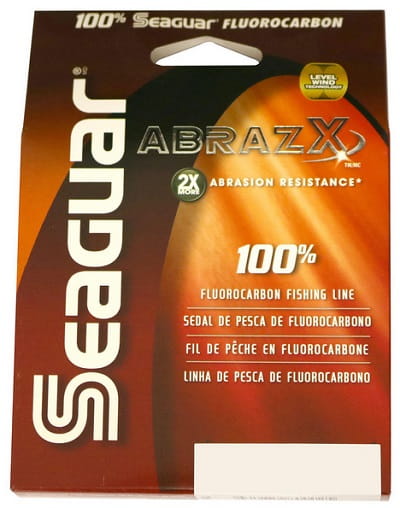
Another option that’s better than mono is Fluorocarbon mainline. Fluorocarbon is abrasion-resistant and more invisible.
My go-to fluorocarbon line is Seaguar Inviz-X or AbrazX.
Leaders For Drift Fishing
When it comes to leaders for drift fishing, the leader I use is fairly basic and easy to make.
I use a fluorocarbon leader that’s one or two sizes smaller than my mainline. For example, if my main line is 14 pounds, I’ll use a ten or 12-pound leader. Don’t use a heavier leader than your mainline, or you might lose all your gear!
I will discuss my actual leader setups below.
Leader Setup To Drift Fish Salmon
There are a few good leader setups I use when drift fishing for salmon.
You can use different types of weights with this setup which I will discuss below, and you should adjust your leader strength and length based on the conditions.
In smaller, clear streams (less than 30 feet wide), I’d use a 10 to 12-pound fluorocarbon leader.
GUIDE TIP: Not all leaders are rated properly… some 10-pound leaders are as thick as 16 to 20 pounds, while others are trout 10 pounds. So for a small stream, or gin clear water, and nervous salmon, the leader size I use is 0.22mm to 0.24mm.
For larger rivers (40 to 100 plus feet wide), I’d go for a 14 to 16-pound leader, (0.26mm to 0.30mm), but I’d try to keep it as light as possible whenever I can.
Thicker leaders might be seen and avoided by salmon, which means fewer bites, especially in slow, clear water. But, too thin might mean you will break off too often, you need to find a happy medium.
I use the same leader setup for salmon as I do for steelhead. Below is my steelhead and salmon leader setup diagram. In larger water, simply upsize your leader strength by one or two sizes. So basically, a 16-pound mainline with a 12-pound or 14-pound leader.
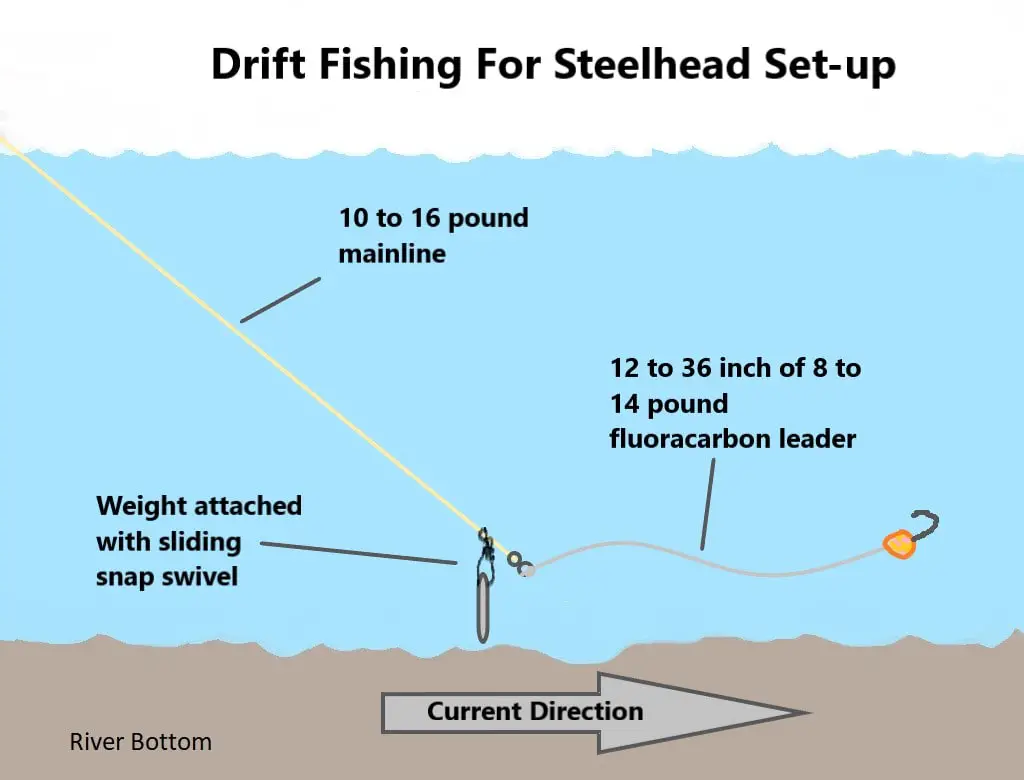
One problem with a typical leader is that the mainline might be too visible in the area where the salmon are most likely to strike, which could scare them off. That’s why I use a short piece of fluorocarbon just above the bottom swivel, as shown in the diagram below. Fluorocarbon is harder for fish to see.
Another issue is that the monofilament mainline can rub against rocks, which can cause damage since it’s not as resistant to wear and tear as fluorocarbon. This might lead to more breakages and lost catches.
So, when I’m guiding others, I add a 12 to 36-inch fluorocarbon leader above the bottom swivel. Usually, this extra piece of leader is the same size as my mainline or just one size smaller.
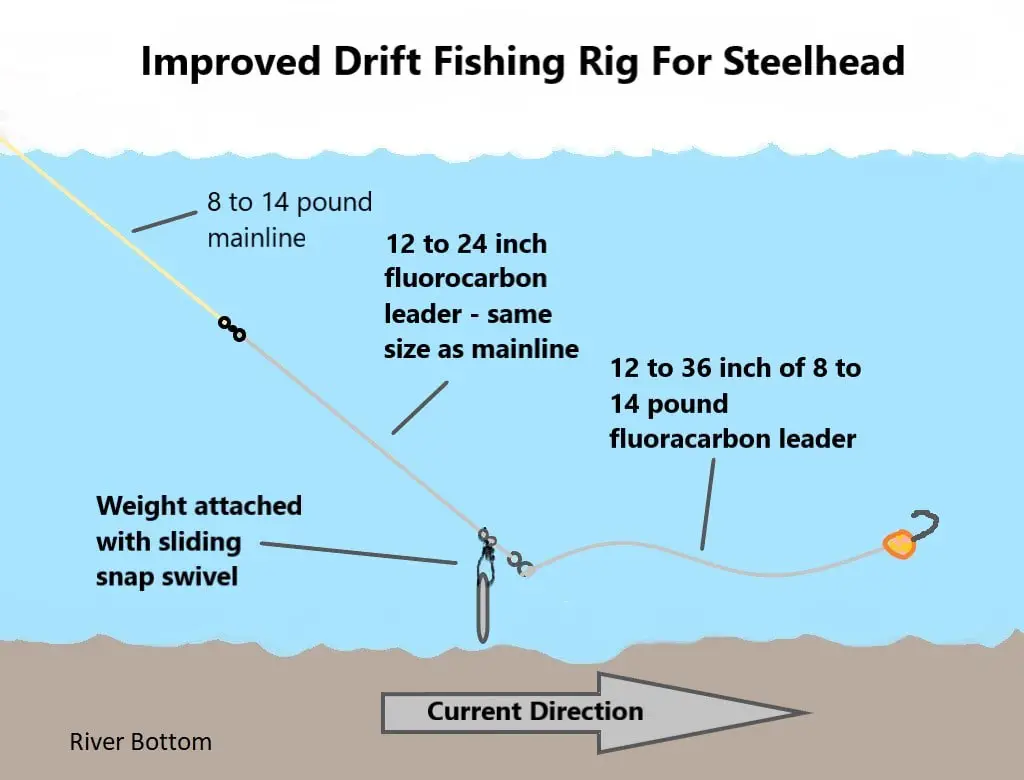
Swivels For Drift Fishing
A lightweight leader is attached to a heavier mainline using barrel swivels. This enables you to swiftly adapt your rig to changing sea conditions and reduce mainline snag loss.
Lead For Salmon Drift Fishing
The key to drift fishing is using the right amount of weight to get your bait to the bottom. Too much weight can hinder a natural drift, while too little weight might keep your bait from reaching the right depth or keep it from staying in the strike zone.
Too much weight will also cause you to snag up too often.
Adjusting the weight based on the water’s speed and depth is crucial, and learning to detect the bottom is essential.
When fishing for salmon, there are different ways to attach your lead. First, make sure the lead is straight to avoid line twists and getting stuck on the bottom. If it spins in the current, it’s not ideal. You should also connect your lead using a snap swivel or a 3-way swivel.
Pencil Lead
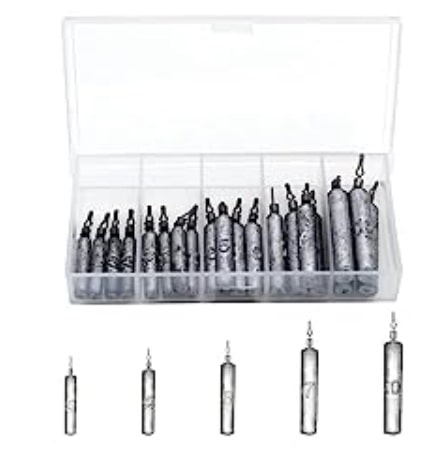
The most common and cost-effective lead weight for drift fishing is pencil lead.
The diameters of pencil lead are 1/8, 3/16, and 1/4 inch.
You can make your own pencil lead weights or buy them premade.
To make a pencil lead weight, watch this VIDEO.
To make your own, you will need a good lead like the Water Gremlin Pencil Lead kit Danielson Sinker Solid Lead Wire, and snap swivels.
You can also buy premade pencil lead weights like the ones in the above pictures.
Pre-made pencil lead weights
- Snakebite Snaps Inline Pro Kit – CHECK PRICE
- Dave’s Tangle Free Steel Stick Weights – CHECK PRICE
- AMYSPORTS Drop Shot Weights – CHECK PRICE
Lindy No-Snagg Slip Sinkers
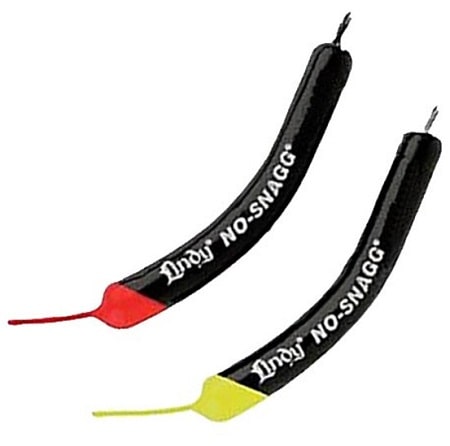
Another option is the Lindy No-Snagg Slip Sinkers.
These are designed to bounce or slide over rocks without getting hung up as often.
They come in colored or solid black, as well as one with or without a rattle. I have tried them all and they all work however I prefer the black color. Check Price.
In some areas, lead is not permitted, however, I believe these Lindy Slip sinkers are permitted however, please check your local fishing regulations to confirm.
The Slinky: Best Option
Slinky weights might be new to some anglers, but they’re a unique and effective option for drift fishing.
A slinky is essentially a bunch of split shots or lead shots placed inside a parachute cord. I, along with many other anglers, consider it the best type of weight for drift fishing.
The slinky rig can range from half an inch to a few inches in length. Its long, slender shape allows the lead to bend and glide over rocks, reducing the chances of getting tangled or stuck.
I first learned about slinkies in the late ’80s or ’90s from a river fishing magazine that claimed they were the best weight for this method. So, I got everything I needed, made my own slinkies, and started using them. They work amazingly well! In fact, they’re my go-to weight in almost all river conditions.
Slinkies are difficult to find in stores or online, so most anglers make their own. Plus, making them yourself allows you to save money and create different sizes to suit your needs.
To Make Slinkies:
- Tuf-Line Slinky Drifter Cord – CHECK PRICE
- Oregon Tackle Slinky Maker Lead Shot – CHECK PRICE
- Snap Swivels – CHECK PRICE
- Torch Lighter – CHECK PRICE
To see how slinkies are made, watch this video.
You can also buy pre-made slinkies – See Eagle Claw Slinkey Weights
Split Shots
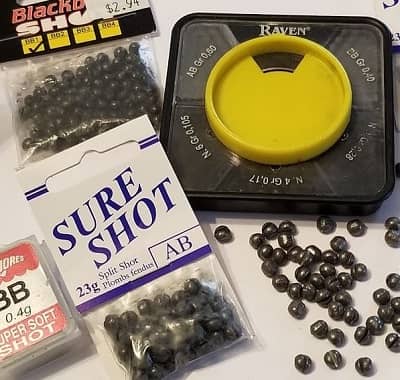
The key to drift fishing in smaller, shallower streams or in pocket water is to use the right amount of weight to get your bait to the bottom without impeding its natural drift.
To do this well, you’ll need to adjust the weight based on the water’s velocity and depth, and learning to detect the bottom is crucial.
Split shots are great in smaller sections of the river, and split shots can be added directly to the line or leader or placed on a three to six-inch dropper.
Although split shots can slip off your dropper line as they drag across rocks, a quick jerk will free them from the rocks as well as preserving your rig, hook, and bait. To prevent the split shot weights from sliding off, I tie an overhand knot at the bottom of the dropper.
When fishing larger rivers, slinkies or pencil lead are preferred.
For split shots, I use the same one that I use when bottom bouncing or when float fishing. The ones that I found to work the best are the Sure Shot Brand in sizes AAA, or AB, or the Raven Super Soft Split Shot
Check Price On Sure Shot: HERE
Check Price on Raven Soft Shot: HERE
Check Price on Raven Splits Shot Variety Dispenser: HERE
NOTE: Do yourself a favor and do not buy or use the shiny silver split shots or the ones with the wings. These can be detected by the salmon or can cause line twists.
Reading Water For Salmon Fishing
Reading the water is a skill and what it means is to look at the river and try to determine where the salmon will be.
Salmon will gravitate to deeper water and slower water, so if a stretch of river is two to three feet deep and there is a small spot that is 5 feet deep the chances are good the salmon will be there.
Corner pools, deep spots behind or near boulders, and deeper water just below rapids are all good options to try.
Salmon Behavior
Understanding salmon behavior is vital for choosing the best fishing spots. At times salmon will be in shallow riffles or pockets. Other times, salmon are likely to be found in deep pools, deep runs, and larger sections of the river, and this is where drift fishing is an ideal method.
Drift fishing allows you to fish at various depths, as long as you use enough weight and can detect the bottom.
Guide Tip: During high river levels, fish for salmon holding near the shore. In slower water, use less weight to keep your bait moving downstream.
Deeper And Bigger Water
If salmon have the option they will hold in deeper water. The deeper water gives them a sense of security. With drift fishing, you can fishthree feet deep or you can fish 30 feet deep. Just be sure that you add enough weight for the depth and velocity of the current.
You want to be sure you get your bait and weights to the bottom and try to detect the bottom so you know when you are deep enough If you are not hitting bottom add more weight, if you are hitting bottom to much reduce the weight.
Deep water can be difficult or impossible to fish effectively with other methods of salmon fishing like float fishing.
Water Levels
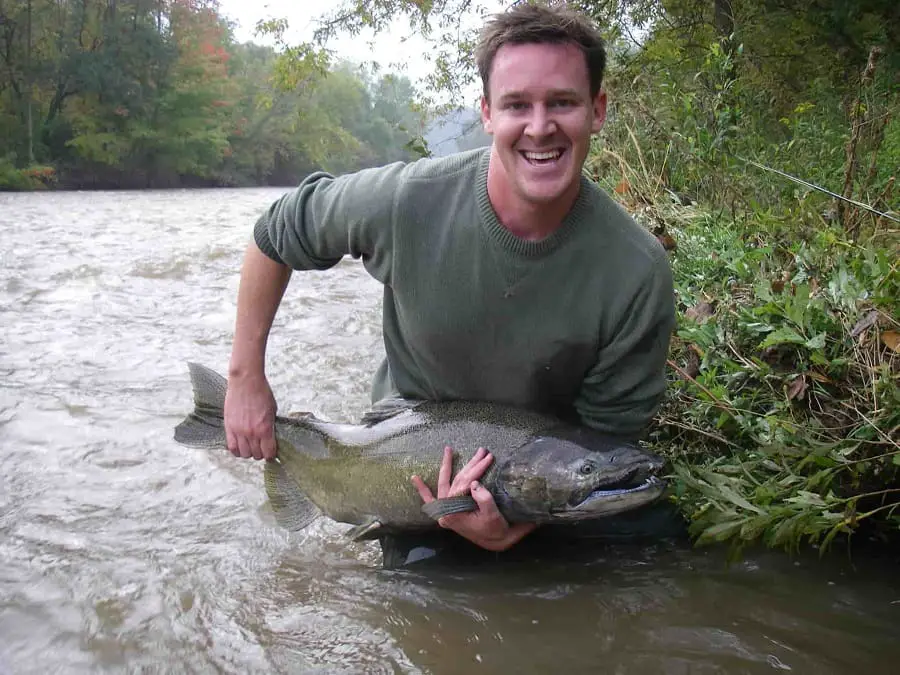
When fishing for salmon in slower water, you will need to use less weight. Otherwise, the current won’t be strong enough to keep your bait moving down the river.
You do not want your bait or your weights to stop.
If the water is higher, you will need to increase the size of the weight to ensure you get to the bottom, and this will also slow your bait down, which is a good thing.
Detecting Bottom
Learning to accurately detect the bottom is crucial.
When I’m teaching clients how to do this, I tell them it’s critical to keep a close eye on your line. If you don’t have enough weight, your line will drift smoothly downriver and you probably won’t catch many salmon.
When your line hits the bottom, it will either stop or twitch as your bait comes into contact with the riverbed, and you need to detect this and then differentiate between the bottom and a bite.
Ideally, your line should twitch and bounce lightly as the weights tap the bottom, always moving at the current’s speed.
If your line keeps stopping, it could be getting caught on the bottom, or a fish might have taken your bait. It’s not always easy to tell the difference.
If your line consistently snags on the bottom, you may be using too much weight. If the weight is tapping the bottom intermittently and the line stops suddenly or pulls, it could be a fish, so set the hook.
Setting the hook when the line stops allows you to determine if a fish is present or not, and I tell my clients set the hook often and whenever they are not sure. If you set the hook and nothing is there, you can often continue the drift.
If the line keeps stopping without a fish, you likely have too much weight for the area.
Experienced anglers with quality rods may be able to feel the subtle ticks as the weights bounce along the bottom. Many anglers also hold the line just above the reel with their thumb and index finger, which may help them sense the ticks and taps through the line as the weights make contact with the riverbed.
Detecting A Bite
Detecting a bite is often something many new anglers struggle with, but with practice, it will become easier. Detecting a strike requires watching the line near the water’s surface like a hawk.
The line should always be moving around the same speed as the current, and if it stops for more than a second, you should set the hook as this could be a bite. If nothing is there, you can continue to let the bait drift down the river.
Also, if you feel any pulling or the line straightens abruptly, you should set the hook. When just learning, set the hook on everything!
I believe a lot of anglers miss bites with the drift fishing method, which is why I don’t use it often with clients, and which is why I, along with thousands of other good anglers, will prefer to use float fishing methods.
Hire A Drift Fishing Guide
It might take years to master salmon fishing with the drift fishing method, especially bite detection. As a result, you might end up wasting plenty of time trying to figure it all out and will be missing out on a lot of fish.
Hiring a drift fishing guide can help shorten the learning curve, but remember that each river is unique, and drift fishing may not always be the best method.
Best Baits to Use When Drift Fishing for Steelheads
When fishing for steelhead, use baits like egg sacks, beads, worms, jigs, and flies. There are a lot more good baits on my page about the best baits for salmon.
You need to decide if it’s good drift fishing water or not, but, if you are new to salmon fishing and you are not sure which method is best, read this article where I discuss all the most effective methods and provide guide tips and tricks for salmon fishing in rivers.
Tight Lines
Graham

))/4153427.json)
